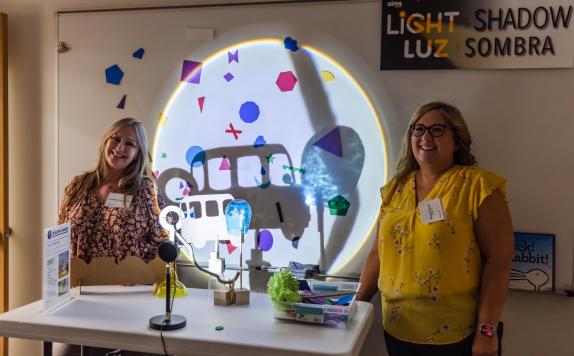Consider examining your data in different ways to better understand strengths and opportunities for growth. For example, your team might focus on educators’ strengths and opportunities for growth by their years of experience, age-level or grade-level, or setting type.
Use a Strengths-based Planning Approach
Guiding principles can offer a shared approach to thinking about early STEAM. This shared approach may help your team recognize the ways your agency already supports early STEAM. Identifying and building on what you already do is the first step in promoting early STEAM in your community.
A strengths-based approach to planning focuses on what is working well already. This approach offers a positive environment for exploring growth opportunities.
A strengths-based approach to early STEAM:
- recognizes that math and science can be playful and part of children’s daily routines,
- builds on children’s knowledge, skills, and prior experiences to support their math and science development and learning, and
- shares ways that early math and science learning experiences are part of what educators already do.
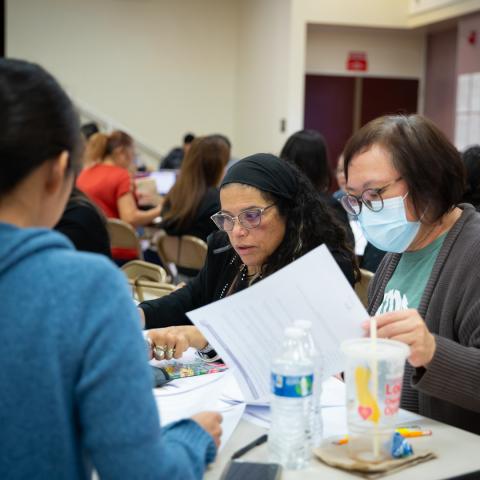
Identify Strengths and Opportunities for Growth
Noticing the ways your agency and community already promote STEAM will help your team focus their efforts. Begin by identifying early STEAM strengths and discovering growth opportunities.
Consider different types of data (or information) that can help your team identify your agency’s early STEAM strengths and opportunities for growth.
Use data collection tools and processes that fit your agency’s needs. Your agency may have data collection processes in place, such as annual child assessments or program quality assessments. However, informal data collection (such as observations or anecdotal evidence) or locally created rubrics or surveys may be appropriate ways to collect the information your agency needs.

Select Data (or Information) to Reflect On
Promoting early STEAM in your community can have a positive impact on PL providers/coaches, educators, children, and families. Let’s explore what your team might want to know about each of these groups. Consider examining your data in different ways to better understand strengths and opportunities for growth. For example, your team might focus on educators’ strengths and opportunities for growth by their years of experience, age-level or grade-level, or setting type.
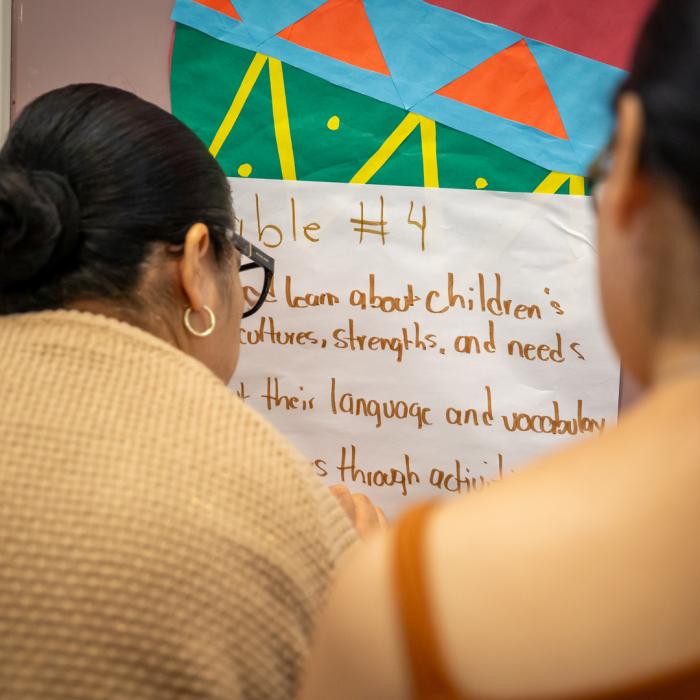
Identify data you might want to collect:
- feelings and thoughts about math and science
- knowledge of early math and science development and pedagogy
- confidence and skills in providing PL and coaching on early math and science
Explore ways to collect data:
- PL provider or coach surveys
- team meeting discussions
- observations of PL providers or coaches implementing PL or coaching
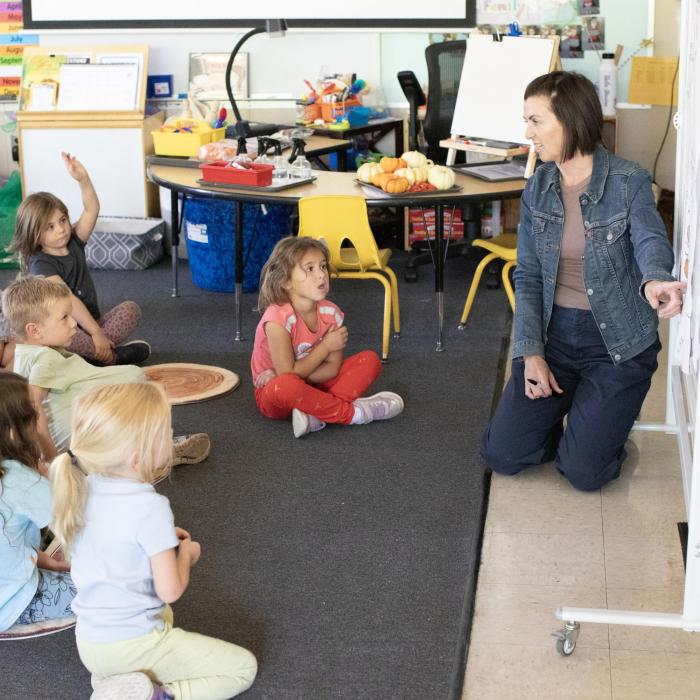
Identify data you might want to collect:
- feelings and thoughts about math and science
- understanding of early math and science knowledge and skills
- math and science teaching practices and learning environments
Explore ways to collect data:
- educator surveys
- educators’ PL histories
- observations of educators and their early learning settings

Identify data you might want to collect:
- current understanding, knowledge, and skills in each math area (for example, number and counting, data and measurement)
- current science understanding, knowledge, and skills
Explore ways to collect data:
- observations of children
- Desired Results Developmental Profiles (DRDP)
- math and science curriculum assessments
- standardized tests (elementary age only)
Identify data you might want to collect:
- feelings and thoughts about math and science
- ways families support early math and science learning at home, especially based on their unique cultural and linguistic backgrounds
Explore ways to collect data:
- family surveys
- information from family enrollment forms and meetings
- conversations with families
Explore: Gather and Reflect on Data
Let’s revisit our case examples to learn how they gathered and reflected on data in their local contexts.
School District
During a series of early STEAM PL experiences, principals drafted a protocol to observe and document what they noticed about early math and science in classrooms. They used these protocols to document practices before educators participated in PL and ongoing coaching sessions.
Based on their observations, early educator surveys, and child outcome data, the early STEAM team identified the district’s early math and science strengths and opportunities for growth. Exploration of their data led them to focus on strengthening the educators’ ability to facilitate children’s math discourse.
County Office of Education (COE)
The COE early math team members gathered information on countywide offerings of PL opportunities. They also surveyed their early educators about their STEAM strengths and areas they wanted to grow. They noticed the following interests and gaps in current PL opportunities:
- play-based approaches to STEAM learning for preschool and transitional kindergarten educators
- geometry and spatial thinking for early elementary educators
- math approaches and content areas for FCC providers
They set a goal to offer PL on play-based approaches to STEAM learning, tailored for early educators in different settings. In addition, for early elementary educators, they set a goal to focus PL on meaningful investigations to support geometry and spatial thinking.
Home-Based Learning Collaborative (HBLC)
HBLC’s early childhood education specialists reviewed the following data related to early STEAM: observations of children’s engagement in math- and science-related activities in home-based settings, FCC feedback on early STEAM PL experiences, and requests for technical assistance related to early STEAM. They noticed that FCC and family, friend, and neighbor (FFN) providers offered some math-related activities during everyday routines. The early STEAM team also noticed that feedback from PL and requests for technical assistance seem to indicate that FCC and FFN providers were interested in using literacy (for example, books and rhymes in children’s home languages and English) to promote STEAM learning. They also wanted to learn more about meaningful investigations.
Based on these data, the early STEAM team set a goal to support providers’ use of literacy and meaningful investigations to promote STEAM learning.
Plan: Data Collection and Reflection
With your team, identify the data you already collect and additional data you want to collect.
Your team may need to collect more data to identify early STEAM strengths and opportunities for growth. Identifying ways to collect new data takes time and resources (human and financial). Consider the following resources you may need to collect additional data:
- agency processes to approve funding and usage of new data collection tools (for example, observations, surveys, child assessments)
- staff time and funding to identify and explore existing tools for collecting the data (for example, publicly available, published surveys)
- staff time and funding to develop, administer, and analyze new data collection tools
Reflect:
Reflect on the types of information or data your agency already collects and any new information you would like to gather. Use the STEAM Goal Setting Guide for Agencies to record your thoughts.
Explore this Resource
Reflect on Your Data
Once your team has gathered the data, find time to reflect on it together. Invite your team to notice patterns or data points that stand out. Then, use the data to identify early STEAM strengths and areas for growth. Explore the following examples of patterns in data.
PL providers report feeling confident in their math and science skills but want to learn more about adult learning principles and how to apply them.
Educators report feeling confident in number and counting but anxious about supporting measurement and data.
Child assessment data show that children are strong in some STEAM areas and could use some support in others.
Families often mention reading or telling stories to their children. However, they are less likely to use math and science in their daily routines and play.
Reflect:
Reflect on the data and patterns you notice. Then, use the STEAM Goal Setting Guide for Agencies to describe what you noticed about areas of strength and opportunities for growth.
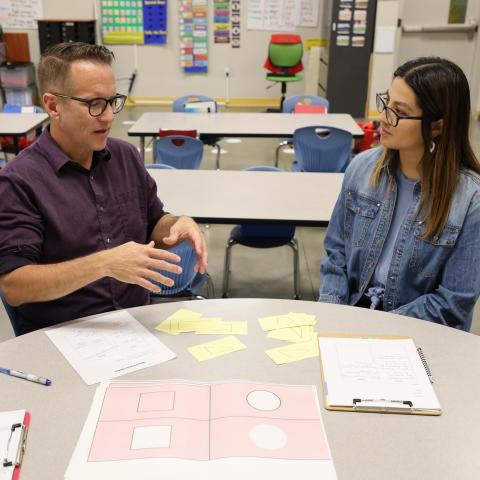
You have completed SUITE NAME
Where to next:
Self-Study Modules
Building Your Capacity
Modules for leaders, professional learning facilitators, and coaches to build their knowledge and skills in how to provide early STEAM professional learning.
Facilitator Resources
Building The Capacity Of Educators
Suites of resources on a range of early STEAM topics for facilitators and coaches to use in professional learning with educators.
